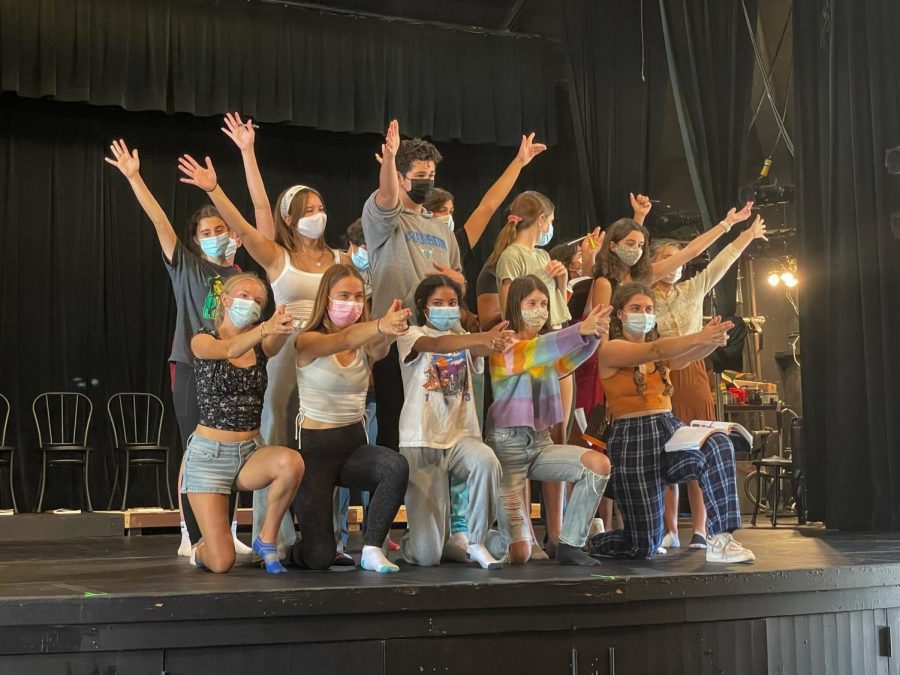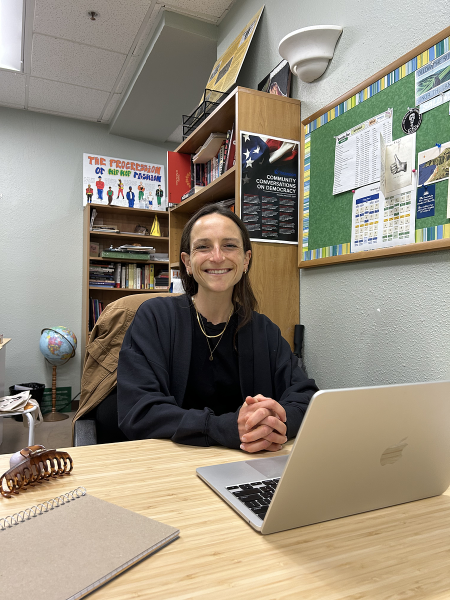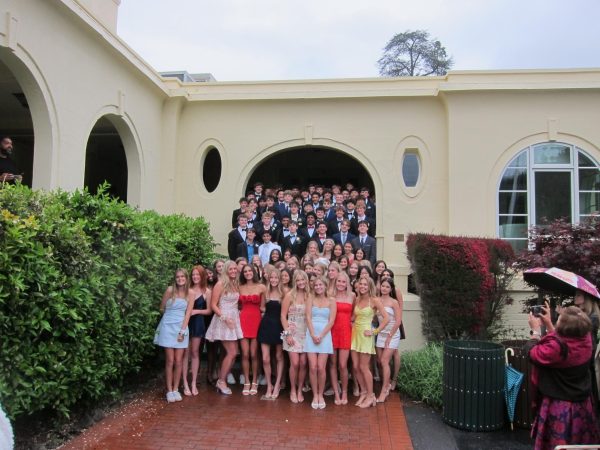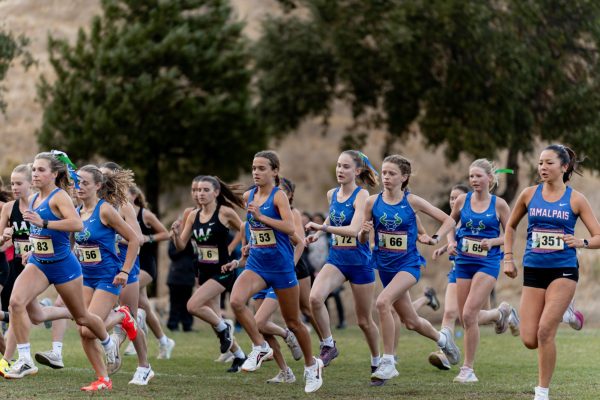Lights, camera, action! Fall musical ‘Chicago’ in full swing
September 26, 2021
After online productions last year, the theater department is diving headfirst into this year’s fall musical: “Chicago.” Despite Covid restrictions, the show must and will go on, albeit with some pivotal changes.
The main drastic restriction is limited capacity. As county and school guidelines indicate, each room can only have 25% capacity. With the theater that can hold 360 people, only 90 would be allowed, including the cast and orchestra. Regardless, everything else with the musical is blowing full steam ahead, including dance numbers and character studies.
“I’m so accustomed to working in the theater with students, with the doors open, with masks, that it really has been pretty seamless. I think the singing is more challenging because we’re trying to have most of the kids outside. It’s just everything takes longer,” Maura Vaughn, the musical’s director, said. “One of the things that’s great about masks, very few things but, when you cannot rely on your facial expressions to affect the other person, you tend to do more with your body and the blocking, which is much more exciting for the audience.”
When choosing the fall musical, Vaughn was initially skeptical of such an adult piece as “Chicago.” Though she usually loves mature and sophisticated material, she felt that the original version was just too much to ask of high school students to perform. Luckily, she discovered a high school version by the same company that didn’t compromise any of the emotional sophistication and themes, and it was chosen as the musical.
“I like, and I love metamorphoses. I like shows that have multiple layers and tell the same story in different ways at the same time. There’s that challenge of making sure the narrative is clear to your audience, but that the layers all come through, and blend and bounce off of each other. There’s the syncopation to that,” Vaughn said.
Before even running the scenes and practicing the blocking, the actors do a deep dive into their character. The character’s backstory can inform the choices they make throughout the play and help the actors bring the character to life on stage.
“You start by reading the play three times, all the way through, and then you make a character bio,” Lucille Rieke, a senior and musical theater veteran, said. “Like my character, Roxy Hart, I need to make a middle name, and a maiden name, and her mother’s name, and her father’s name, and her mother’s maiden name, and her whole life. After that, you decide your character’s super objective, which is what they want throughout the entire musical — like Roxy’s is to become famous.”
The process continues, with even more analysis of characters and scenes before even reading the lines with other actors.
“Then you break each scene into what your objective is for that scene, what your obstacle is and the event. Then you break each scene into beats, which is where there’s switches in tactics, and then you continue on,” Rieke continues.
Helping the actors with each scene after they’ve analyzed their character are the stage managers. The stage managers are the keepers of the book, and the book is how an actor moves across the stage at any given time, oftentimes multiple actors in different directions simultaneously.
“There’s an adage in the theater: that you have the actors, the directors, the designer, God, and then the stage manager. Backstage, they’ll run the show,” Vaughn said. As director, her work focuses on the show itself, but she relies on the stage managers to run the whole production without her guidance.
“I think all the audience sees is the finished product and not all the days and weeks of work that goes into it. Like, the most recent practice that Amaya and I were at, we were working on this one scene for probably three hours,” Olive Fahlen, a senior and one of the stage managers, said. With the help of her fellow senior, Amaya Knox, the stage managers will guide the actors through a seamless production, navigating the character arcs and technical challenges that occur backstage.
To bring the characters’ appearances to life, the director and stage managers used the skills of a costume designer.
“I like clothing because it is a very personalized thing, it’s a way to express yourself, and be comfortable, and I always enjoyed fashion and dresses and pretty things like that,” Lily Maloney, a junior and the costume designer, said. “I was always a bigger kid, so it was hard to find clothing in my size. Or if I did, it would never fit quite right, so I would tailor clothing to fit better.”
When she found out this fall’s musical was “Chicago,” Maloney decided to expand her fashion horizons.
“I thought, It’d be fun to intern to do the costumes and help out the designer, so I sent Maura an email. And she thought it was a great idea,” Maloney said.
Just like that, the musical team gained an invaluable member with a slightly daunting but thrilling task: to transform the teenage actors into 1920s adults challenging the fashion norms.
“Over the summer, I watched “Chicago” three to four times. I took notes on the scenes, the theme of what a scene was. I started going through the costumes we’ve used for other shows, picking out stuff that looks like it could be from the 20s, and then cherry-picking from that selection: what would work for what character, for what scene,” Maloney said. “I have a bunch of costumes laid out for other numbers that I haven’t had the actors try on yet. ‘Cell Block Tango’ and ‘All I Care About (Is Love)’ have very different themes, so I need to get some dresses in and embellish them to fit the 20s and their respective themes.”
“Chicago” is shaping up to be an exciting production, with impressive character arcs played by even more impressive actors, guided by their director and stage managers.
“It’s going to be really fun; it’s just scintillating enough, and not too scintillating,” Vaughn said.






